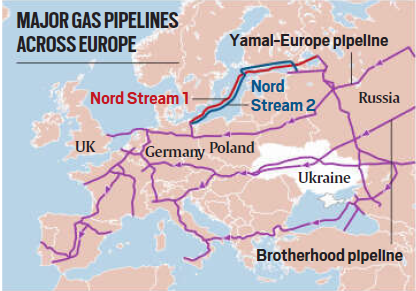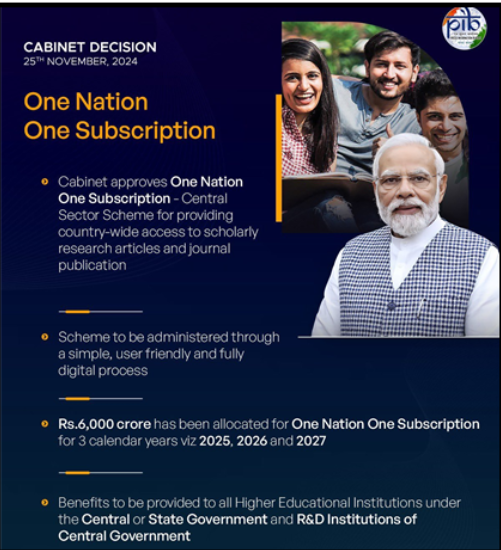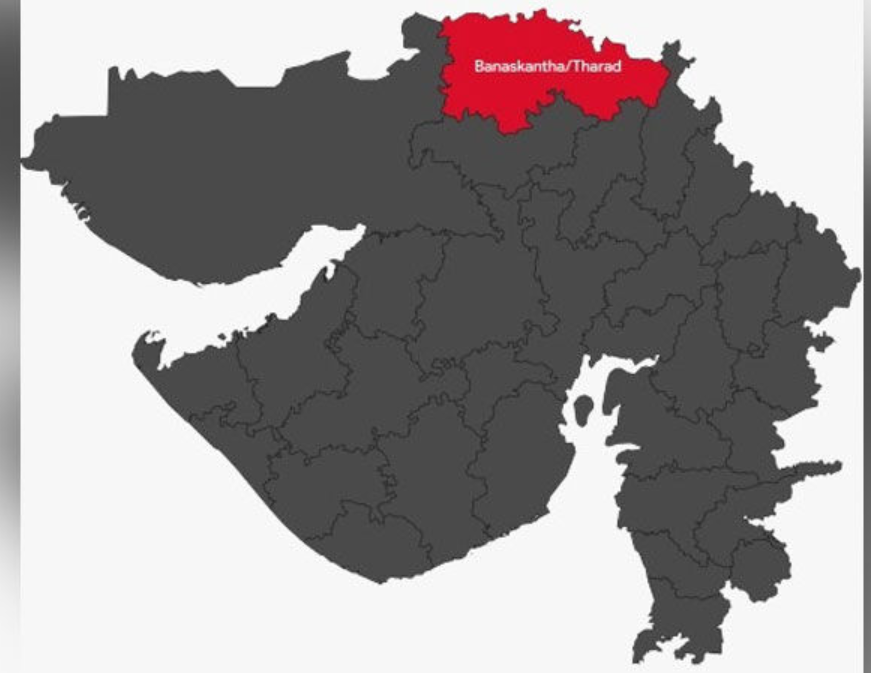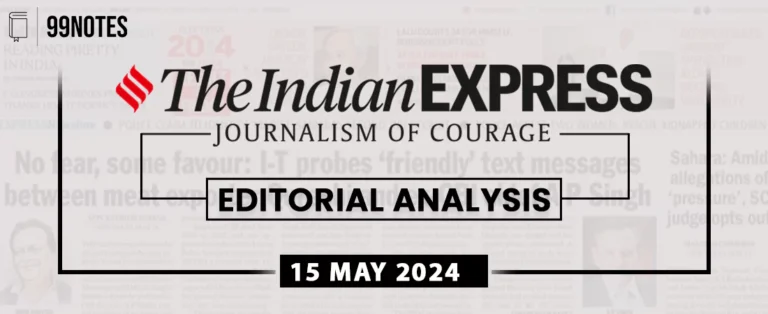02 January 2025 : Daily Current Affairs
1. Four UN environmental summits fell short in 2024. What happened?
(Source – The Hindu, International Edition – Page No. – 7)
| Context |
|
Failures at Key Environmental Summits
- These meetings aimed to align global goals, ensure equitable accountability, and mobilize adequate financing but yielded no or limited progress.
- The lack of consensus has delayed critical actions on biodiversity loss, climate finance, drought mitigation, and plastic pollution, impacting vulnerable countries the most.
Diverging National Priorities
- A significant reason for the setbacks is the growing divide in national interests between developed and developing countries.
- Developing nations demand increased financial and technological support to address their economic and climate challenges.
- Developed countries, citing domestic constraints, are reluctant to commit additional resources.
Examples of Stalemates
- At the Colombia summit, disagreement over a $700 billion annual requirement for financing biodiversity conservation led to a gridlock.
- In Azerbaijan, developing nations demanded $1.3 trillion in annual climate finance, but only vague commitments to raise funds from diverse sources were made.
- Discussions on transitioning from fossil fuels and implementing the Paris Agreement’s global stocktake faltered over accountability mechanisms.
- Talks in South Korea on plastic pollution failed due to opposition from economies dependent on plastics to a legally binding treaty, favoring recycling initiatives instead.
Challenges from Global Crises
- The COVID-19 pandemic, geopolitical conflicts, and economic instability diverted resources and attention from environmental priorities.
- Many developing nations face the dual burden of inflation, debt, and climate vulnerabilities, weakening their negotiating positions.
Implications of Failed Negotiations
- Delayed Action: Critical measures to combat biodiversity loss, climate change, and pollution are postponed, increasing the risk of irreversible tipping points.
- Fragmented Efforts: The failure of multilateral processes may lead to incoherent regional actions that lack global coordination.
- Erosion of Trust: Repeated failures undermine confidence among nations, complicating future negotiations.
- Increased Pressure on Future Summits: Upcoming meetings face heightened expectations to deliver meaningful results.
Strategies to Rebuild Momentum
- Climate Finance: Developed countries must fulfill financial and technological commitments to build equitable negotiations.
- Transparency and Accountability: Robust mechanisms to monitor progress and commitments are critical for restoring trust.
- Inclusive Diplomacy: Geopolitical tensions must be addressed to ensure equitable participation, especially for vulnerable nations.
- Implementation Focus: Emphasis should shift from pledges to measurable actions and tangible outcomes.
- Integrated Solutions: Recognizing connections between climate change, biodiversity loss, land degradation, and plastic pollution is essential for comprehensive strategies.
Conclusion
- The stakes in addressing environmental crises are immense. Nations must prioritize collective action, moving beyond short-term interests to adopt a shared vision for a sustainable future.
| PYQ: Describe the major outcomes of the 26th session of the Conference of the ParSes (COP) to the United NaSons Framework Convention on Climate Change (UNFCCC). What are the commitments made by India in this conference? (250 words/15m) (UPSC CSE (M) GS-3 2021) |
| Practice Question: Discuss the challenges faced by global environmental negotiations in achieving consensus on issues like biodiversity conservation, climate change, and plastic pollution. Suggest strategies to overcome these challenges and ensure meaningful global cooperation. (250 Words /15 marks) |
2. In search of a ‘grand strategy’ for India’s foreign policy in the 21st century
(Source – The Hindu, International Edition – Page No. – 11)
| Context |
|
India’s Core Strategic Partnerships
- India’s most significant strategic relationships include Japan, Australia, the U.S., Russia, France, Israel, and the UAE.
- These partnerships, though not formal alliances, are essential for advancing India’s ambition to become a leading global power.
- These nations support India’s strategic autonomy and share common interests in countering China’s growing regional and global influence.
| Key Pillars of India’s Grand Strategy |
|
Challenges in India’s Strategic Landscape
- U.S. Approach: The U.S. sometimes poses challenges to India’s autonomy, urging partners to take sides in conflicts, which complicates India’s independent stance in global issues.
- Russia’s Role: Russia’s push for closer ties between India and China poses a challenge to India’s desire to maintain independent and balanced relations with both nations.
- Neighbourhood Dynamics: India’s relationships with its neighbouring countries, particularly in South Asia, remain complex and are not seen as key to its global rise, sparking debate on the regional approach.
India’s Global Power Ambitions
- India’s rise as a global power is underpinned by its growing economic and military strength.
- However, achieving this status may not necessarily require dominance in South Asia.
- India’s cultural, religious, and diplomatic attributes contribute significantly to its soft power, reinforcing its position as a peaceable and liberal global player.
The Influence of China
- China’s rise is a central element in shaping India’s foreign policy, with its growing influence in Asia and the Indo-Pacific presenting both a challenge and a driver for India’s strategic direction.
- To counter China’s dominance, India is focusing on strengthening its partnerships, particularly with the Quad and other regional allies.
Distinguishing Between Grand Strategy and Tactics
- A key insight in India’s foreign policy is the distinction between grand strategy and tactics.
- While symbolic gestures like diaspora engagement and personalized diplomacy have a place, they are not substitutes for long-term strategic objectives.
- India’s evolving foreign policy reflects a more thoughtful and deliberate approach to securing its place as a leading global power.
Conclusion
- India’s foreign policy and global ambitions are shaped by its strategic relationships, its quest for autonomy, and the need to manage China’s rise.
- These elements are balanced with India’s soft power and its evolving role in global geopolitics.
| Practice Question: India’s foreign policy is increasingly shaped by strategic partnerships rather than multilateral frameworks. Discuss the significance of India’s strategic autonomy in its relationships with key global partners and its role in countering China’s rise. (250 Words /15 marks) |
3. End of an Era: Russia Halts Gas Transit Through Ukraine Amid Geopolitical Strains
(Source – Indian Express, Section – The World- Page No. – 10)
| Context |
|
Analysis of the news:

End of Russian Gas Transit via Ukraine
- On New Year’s Day, Russian natural gas exports through Soviet-era pipelines via Ukraine ceased as a transit agreement expired, marking the end of a historic energy route to Europe amidst ongoing conflict.
- This shutdown follows years of deteriorating relations between Moscow and Kyiv since Russia’s annexation of Crimea in 2014 and Ukraine’s subsequent decision to halt direct gas imports in 2015.
Strategic and Financial Impacts
- The stoppage signifies substantial financial losses for both nations. Ukraine faces an estimated $800 million annual loss in transit fees, while Gazprom, Russia’s state-owned energy company, could lose approximately $5 billion in gas sales.
- Russia’s share of Europe’s gas market, once 35%, has drastically diminished due to geopolitical tensions and Europe’s active diversification of energy sources since the onset of the war in 2022.
Shifting European Energy Dynamics
- The European Union, determined to reduce dependency on Russian energy, has secured alternative supplies for countries like Slovakia and Austria.
- However, nations like Moldova, heavily reliant on Russian gas, are introducing austerity measures to manage reduced energy availability.
- Other major Russian export routes, such as the Yamal-Europe pipeline and Nord Stream, are also defunct, leaving TurkStream as the primary conduit to Turkey and parts of Central Europe.
Historic Decline in Gas Transit
- Russia’s gas exports via Ukraine, which peaked at 65 billion cubic meters (bcm) annually in 2020, dwindled to 15 bcm by 2023.
- The cessation of this route underscores the collapse of a half-century-long energy partnership, highlighting the economic and strategic consequences of prolonged geopolitical conflict.
| Significance of the Pipelines |
| (A) For Europe: Provides a steady and cost-effective supply of natural gas, essential for heating, power, and industry which ensures stable gas prices. If reduced supply from Russia could lead to price hikes and domestic unrest in Europe. (B) For Russia: Revenue: Critical for Russia, with around 40% of its budget coming from gas and oil sales. (C) Geopolitical Influence: Strengthens Russia’s influence over Europe’s energy markets by securing its position as a major gas supplier. |
| Practice Question: Analyze the implications of the cessation of Russian gas transit through Ukraine on European energy security, the economic interests of Russia and Ukraine, and the broader geopolitical landscape.(150 Words /10 marks) |
4. One Nation One Subscription
(Source – https://pib.gov.in/PressReleseDetail.aspx?PRID=2089179®=3&lang=1 )
| Context |
|

What is ONOS?
- ONOS is a national initiative designed to provide students, faculty, researchers, and scientists in India’s government higher education institutions and R&D centres with access to international scholarly journals and articles.
- The scheme aims to improve research quality by offering global resources across various academic fields.
- It seeks to foster innovation and enhance India’s research capabilities by ensuring equitable access to world-class research materials.
Key Objectives of the ONOS Scheme
- Access to Global Research: The scheme provides free access to more than 13,000 international journals, benefiting about 1.8 crore students and researchers.
- Promoting Inclusive Research: It ensures equal access to research resources, including for institutions in remote and tier 2-3 cities.
- Encouraging Global Collaboration: ONOS aims to integrate India’s research community with global scholarly communities, enhancing global participation.
Implementation Process
- Centralized Coordination by INFLIBNET: INFLIBNET, an autonomous center under the University Grants Commission (UGC), will manage and distribute digital access to the journals. It ensures ease of access for users across the country.
- Digital Access: Researchers and students can access journals digitally, eliminating administrative burdens and providing on-demand access.
- Subscription Coverage: Over 6,300 government academic and R&D institutes are part of the program, ensuring extensive coverage across India.
Funding and Financial Strategy
- Government Allocation: ₹6,000 crore has been allocated for the ONOS scheme from 2025 to 2027. This will cover subscription charges for journals from 30 major international publishers.
- Support for Open-Access Publications: The government will allocate ₹150 crore annually for Indian authors to publish in quality open-access journals.
- Phase-wise Funding: ONOS will be implemented in phases, with Phase I starting in January 2025. This phase covers subscriptions for journals and payments for publishing costs.
Advantages of ONOS
- Enhanced Research Quality: Indian researchers will have access to cutting-edge research, improving the quality and depth of studies across various disciplines like science, technology, medicine, and social sciences.
- Equitable Access: The scheme ensures that even institutions in remote locations or smaller cities have access to the same global resources as those in major urban centres.
- Global Recognition and Collaboration: The scheme helps Indian researchers participate more actively in international research collaborations and increases global recognition of Indian research.
- Cost Savings: ONOS eliminates the need for institutions to purchase expensive individual subscriptions, significantly reducing costs for academic and research institutions.
Way Forward
- Strengthening India’s Research Ecosystem: ONOS is aligned with India’s vision of becoming a global leader in research by 2047, helping foster innovation and cutting-edge studies.
- Synergy with Other Initiatives: ONOS will complement other research initiatives like the Anusandhan National Research Foundation (ANRF), driving further R&D efforts.
- Sustainability and Growth: Over time, ONOS will expand to include more research journals and incorporate feedback from the academic community to improve its offerings.
Conclusion
- The One Nation One Subscription scheme is a transformative step in democratizing access to global research resources, thus improving the quality of education and research in India.
- Through its comprehensive approach, it will enhance India’s position as a leader in global research and innovation.
| Practice Question: Discuss the objectives of the One Nation One Subscription (ONOS) scheme in enhancing India’s research ecosystem. How does it contribute to India’s global research standing? (250 Words /15 marks) |
Prelims Facts
1. Banking on technology, India’s weatherman to turn 150 on Jan. 15
(Source – The Hindu, International Edition – Page No. – 3)
| Context |
|
India Meteorological Department (IMD):
- The India Meteorological Department (IMD) was established in 1875 and is one of the earliest government departments in India for systematic weather observation and forecasting.
- Headquarters: New Delhi.
- The IMD has contributed significantly to weather prediction and climate services for over 150 years, with its foundation laid through early meteorological observatories in the country.
- The first Meteorological and Astronomical Observatory was set up in Madras in 1793, marking the beginning of instrumental meteorology in India.
- IMD’s major breakthroughs include:
- Preparation of the first weather chart (1877) and Daily Weather Report (1878).
- Establishment of climatology based on long-term data and the commencement of radar services (1947-1959).
- The global satellite era (1960-1970) and modernisation (2006-2013), improving forecasting accuracy by 40-50%.
- IMD is equipped with over 4,000 scientific personnel, advanced meteorological instruments, and modern forecasting and warning systems.
- It provides services across sectors like aviation, shipping, agriculture, flood management, and fisheries.
2. Ultrablack Brazilian Velvet Ants
(Source – Indian Express, Section – Explained – Page No. – 07)
| Context |
|
Analysis of the news:

Velvet Ants: Misnamed but Fascinating Wasps
- Velvet ants, despite their name, are not ants but wasps, recognized for their distinctive fluffy appearance.
- Among them, a species native to Brazil’s tropical savannas and dry shrub deserts, Traumatomutilla bifurca, is noted for its striking black-and-white markings.
- Recent research has revealed that the black parts of female velvet ants are ultrablack, absorbing nearly all visible and ultraviolet light.
Ultrablack: A Rare and Remarkable Shade
- Ultrablack pigmentation, achieved through microstructures that trap light, is uncommon in the animal kingdom.
- Unlike regular black caused by melanin, ultrablack exhibits no sheen and serves multiple purposes, such as camouflage, thermoregulation, and mate attraction.
- In velvet ants, the ultrablack is produced by thin, stacked platelets beneath a dense layer of hair, resembling the pages of a book.
Potential Functions of Ultrablack in Velvet Ants
- Although ultrablack might help camouflage velvet ants from predators with ultraviolet vision, its necessity is unclear.
- Velvet ants are already well-protected by their hard exoskeletons, painful stings, and defensive screeches, which deter most predators.
- Interestingly, only female velvet ants exhibit ultra-black pigmentation, a feature whose purpose remains a mystery.
Scientific Significance
- This discovery marks the first instance of ultrablack pigmentation in Hymenoptera, the insect group that includes bees, wasps, and ants.
- It underscores the diversity of color production mechanisms in nature and highlights the potential adaptive significance of ultrablack coloration in the animal kingdom.
3. Gujarat Government Creates Vav-Tharad District, Restructuring Banaskantha for Better Accessibility
(Source – Indian Express, Section – Express Network- Page No. – 05)
| Context |
|
Analysis of the news:

Creation of Vav-Tharad District
- The Gujarat government has decided to bifurcate Banaskantha district, creating a new district named Vav-Tharad with its headquarters at Tharad.
- This decision was made during the state cabinet meeting chaired by Chief Minister Bhupendra Patel.
- With this move, Gujarat will now have 34 districts.
Rationale Behind the Decision
- Banaskantha is Gujarat’s largest district in terms of talukas and the second largest by area.
- The division is aimed at improving accessibility and ensuring better public services.
- By creating Vav-Tharad, people in remote villages will no longer have to travel an additional 35-85 km to reach administrative facilities.
Structural Details of the New Districts
- Vav-Tharad District:
- Talukas: Vav, Bhabhar, Tharad, Dhanera, Suigam, Lakhni, Diodar, and Kankrej.
- Area: 6,257 sq km.
- Municipalities: Bhabhar, Tharad, Thara, and Dhanera.
- Banaskantha District:
- Talukas: Palanpur, Danta, Amirgadh, Dantiwada, Vadgam, and Deesa.
- Area: 4,486 sq km.
- Municipalities: Palanpur and Deesa.
The division ensures both districts will have approximately 600 villages each for balanced administration.
Anticipated Benefits
- Ease of Access: Reduced travel time for residents, enhancing connectivity to government offices.
- Resource Allocation: The new district will receive increased funds and government grants, fostering infrastructure development.
- Human Development: Enhanced focus on health, education, and public facilities, improving living standards in the newly formed district.
This strategic move is expected to bring long-term benefits by ensuring more equitable governance and development.
For more such UPSC-related Current Affairs, Check Out-01 January 2025: Daily Current Affairs




